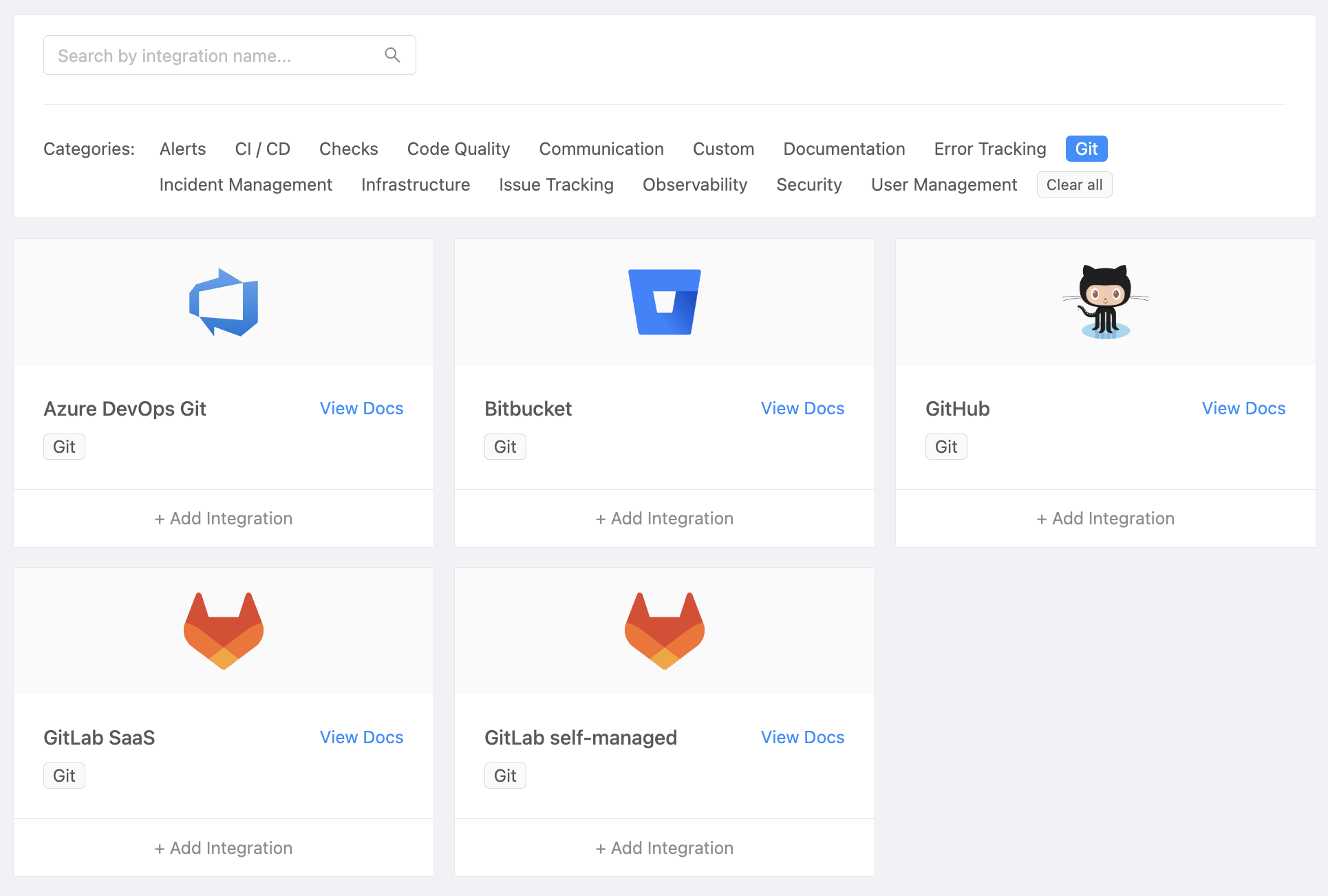Git Integrations
Integrate with your Git provider to perform checks against your repositories, define services through config-as-code with opslevel.yml and view API Docs.
You likely use a myriad of cloud-based tools to operate your services. At OpsLevel, part of our vision is bringing various data points from all of these tools together, to help you gain insights and build more reliable software.
Git Integration
Our Git integrations unlock a lot of functionality in OpsLevel:
- Checks that can dive deep into your codebase.
Do you want to make sure all your Python services are on a modern version of the language? Or that no services are using an old library that you’re trying to deprecate? Or that every service has a CircleCI config file? You can do that. - OpsLevel will stay up-to-date by reading the opslevel.yml files in your services’ repos.
Now you don’t have to go to OpsLevel’s UI to update your service metadata and can make changes to service metadata using pull requests. - Centralized API Docs and Tech Docs to boost developer productivity
Track API Docs and Tech Docs for all your services in one place. Developers don’t have to spend hours searching for them across wikis, repos, … They can simply visit OpsLevel. - Populate your catalog quickly usingService Detection
Use the data in your repositories to build and bridge gaps in your Service catalog. Use the information in your code to automatically fill in metadata related to new Services.
To set up a Git integration, go to our Integrations tab and hit “New Integration”. Then, look for the integration you want and hit “Add Integration.” We have first class integrations for GitHub, GitLab, Azure DevOps Git and BitBucket. Make sure the account you use has the right permission level to add the respective apps to your Organizations/Projects/Groups.

You will be prompted to follow the link to your Git provider where you will need to sign in and authorize.

Once you’ve authorized the app, we will pull in your repos, and try to connect any services with an opslevel.yml.

Map a Repository to a Service
Now that OpsLevel can scan your repos, all that’s left is to map them to your services.
NOTE: If you want to manage your service metadata in code with an opslevel.yml file, you can skip the steps below. Adding an opslevel.yml file to your repo will automatically create a service in OpsLevel and do the mapping for you.
If you need to manually map a service to a repository, you can do this from that service’s Repositories card.
On the service’s detail page, navigate to the Operations Tab. Then in the Repositories card, click “Edit”.

Then click “Add Repository”.

From here you can pick the repo that corresponds to this service’s code base.
If the service’s code lives in a mono-repo, you can optionally include a sub-path in the “Directory” field.

If the service’s code is split across multiple repos, feel free to map multiple repositories to your service in OpsLevel. Checks will be run across all of them.
Have fun
Now you can start setting up:
- Repo File Checks and Repo Search Checks
- opslevel.yml to keep OpsLevel data up-to-date
- API Docs and Tech Docs to boost developer productivity
- Review and refine detected services.
If you have any questions or are interested in trying out OpsLevel, hit us up at [email protected].
Updated 29 days ago
